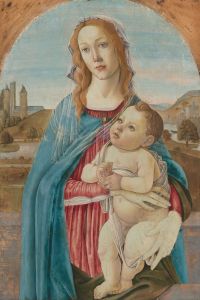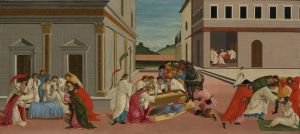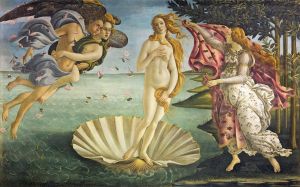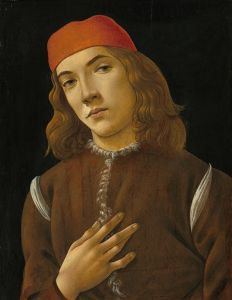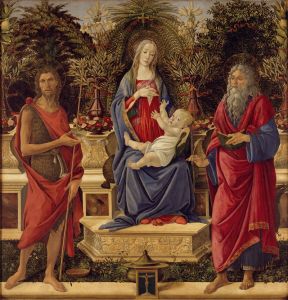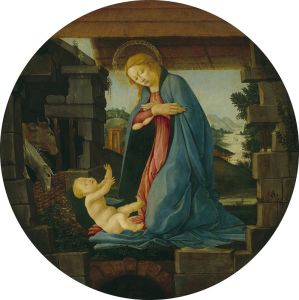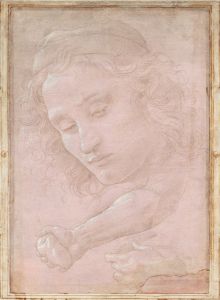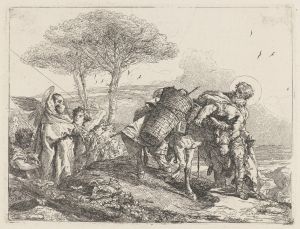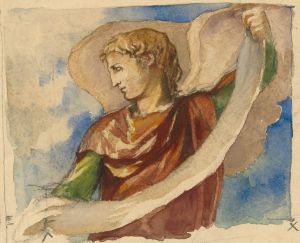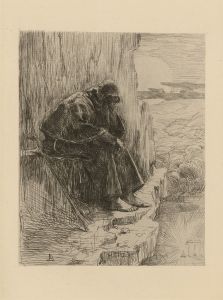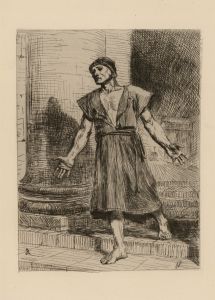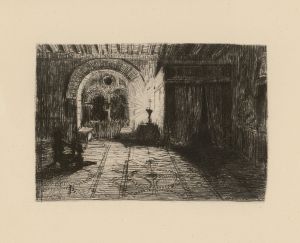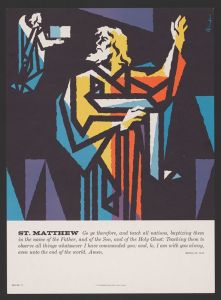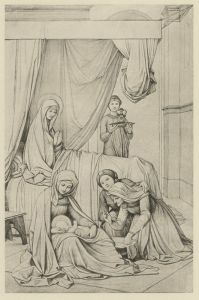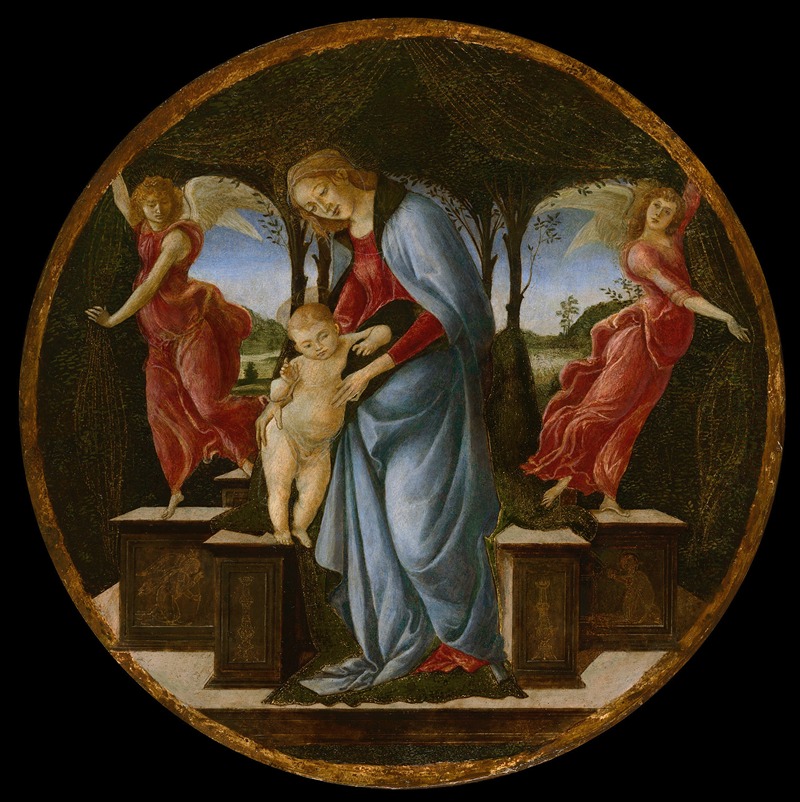
Virgin and Child with Two Angels
A hand-painted replica of Sandro Botticelli’s masterpiece Virgin and Child with Two Angels, meticulously crafted by professional artists to capture the true essence of the original. Each piece is created with museum-quality canvas and rare mineral pigments, carefully painted by experienced artists with delicate brushstrokes and rich, layered colors to perfectly recreate the texture of the original artwork. Unlike machine-printed reproductions, this hand-painted version brings the painting to life, infused with the artist’s emotions and skill in every stroke. Whether for personal collection or home decoration, it instantly elevates the artistic atmosphere of any space.
"Virgin and Child with Two Angels" is a painting by the renowned Italian Renaissance artist Sandro Botticelli. Created around 1468-1469, this artwork is a fine example of Botticelli's early work and reflects the stylistic influences of his time. Botticelli, whose full name was Alessandro di Mariano di Vanni Filipepi, was a prominent painter in Florence, and his work is characterized by its graceful figures and delicate use of color.
The painting depicts the Virgin Mary holding the Christ Child, flanked by two angels. This composition is a common theme in Christian art, known as the Madonna and Child, which symbolizes the Virgin's role as the mother of Jesus and her importance in the Christian faith. The inclusion of angels adds a celestial dimension, emphasizing the divine nature of the figures.
Botticelli's "Virgin and Child with Two Angels" is notable for its serene and harmonious composition. The figures are arranged in a pyramidal structure, a common compositional technique during the Renaissance that creates a sense of stability and balance. The Virgin Mary is depicted with a gentle and contemplative expression, her head slightly tilted as she gazes at her son. The Christ Child, portrayed with the innocence typical of such depictions, reaches out towards one of the angels, creating a sense of interaction and liveliness within the scene.
The angels in the painting are depicted with youthful, delicate features and are positioned symmetrically on either side of the Virgin and Child. Their presence not only enhances the composition but also serves to frame the central figures, drawing the viewer's attention to the Madonna and Child. The angels' expressions are serene, contributing to the overall tranquil atmosphere of the painting.
Botticelli's use of color in "Virgin and Child with Two Angels" is subtle yet effective. The soft, muted tones create a sense of harmony and unity within the composition. The Virgin's robe is rendered in a rich blue, a color traditionally associated with her in art, symbolizing purity and heavenly grace. The angels' garments are painted in complementary colors, enhancing the visual appeal of the work.
The background of the painting is relatively simple, allowing the viewer to focus on the figures. This simplicity is characteristic of Botticelli's early works, where the emphasis is placed on the depiction of the figures rather than elaborate backgrounds. The lack of detailed scenery also serves to elevate the spiritual and contemplative nature of the painting.
"Virgin and Child with Two Angels" is housed in the Museo Nazionale di Capodimonte in Naples, Italy. It remains an important work within Botticelli's oeuvre, showcasing his early mastery of composition, form, and color. The painting reflects the influence of his teacher, Filippo Lippi, as well as the broader artistic trends of the Florentine Renaissance, which emphasized naturalism, balance, and the harmonious depiction of religious subjects.
Overall, Botticelli's "Virgin and Child with Two Angels" is a testament to his skill as a painter and his ability to convey religious themes with grace and subtlety. The painting continues to be admired for its beauty and its contribution to the rich tapestry of Renaissance art.





